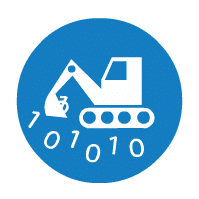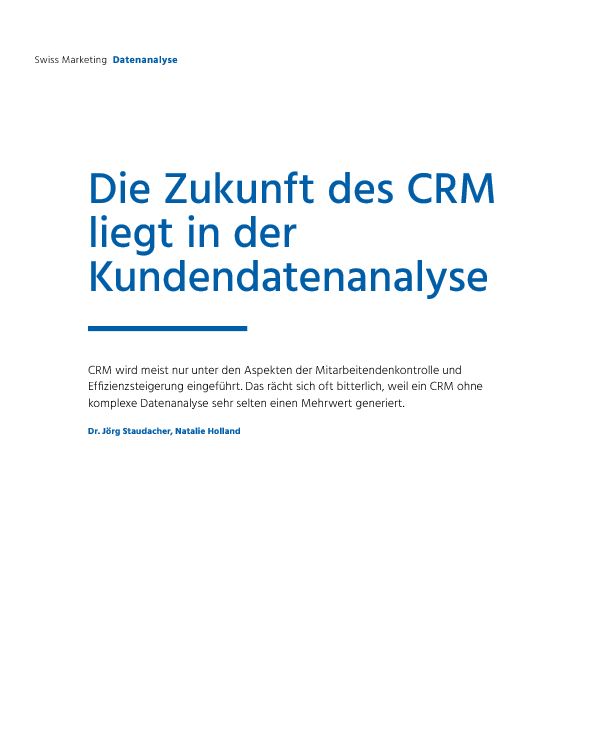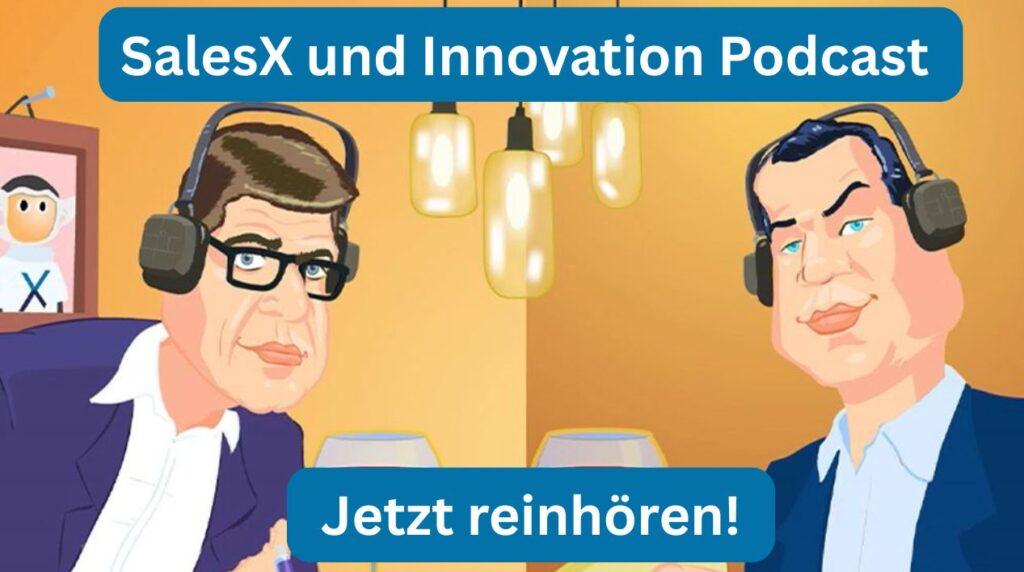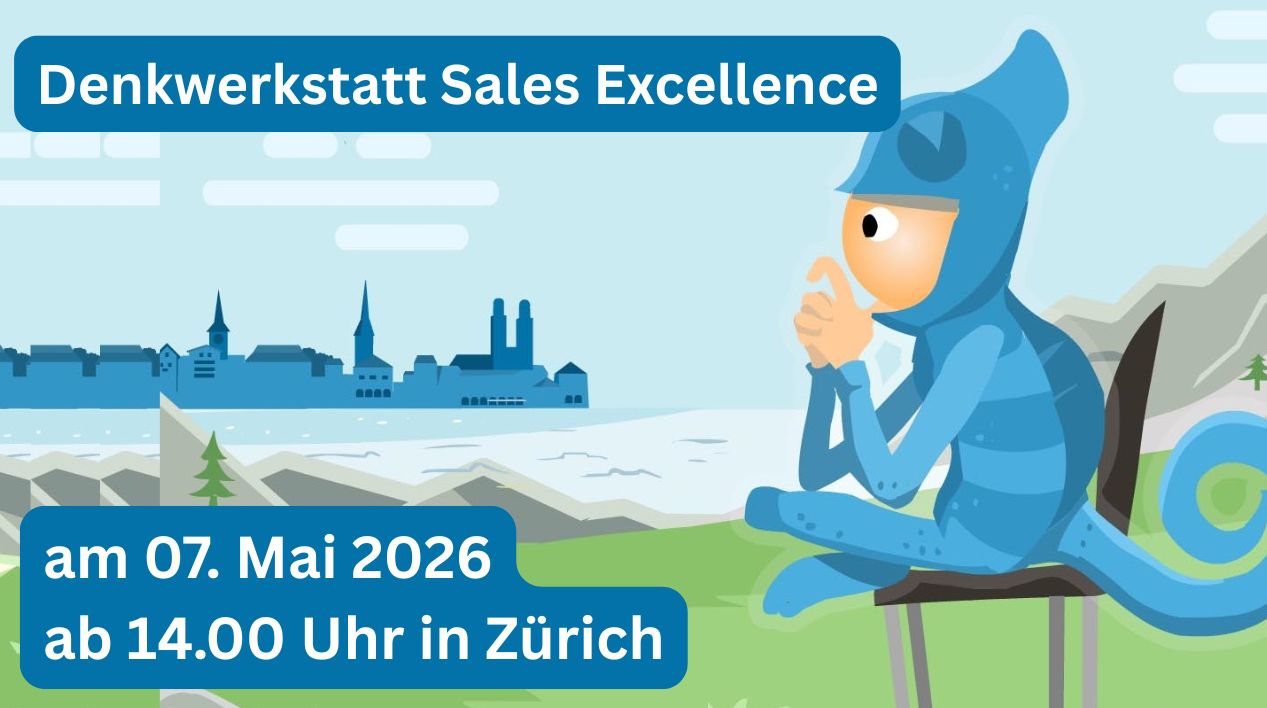Competition is also increasing in the area of training and further education in Switzerland. In this context, the use of more (digital) touchpoints hardly brings any differentiation. Customer insights are the basis for a company’s success, also in the area of training and development. Our client conducts numerous training and further education courses at several locations. It has an ERP and a content management system. Customer data was previously distributed in both systems and lists had to be created manually for campaigns. Automation of the numerous manual activities and tracking of customer behavior on the various digital touchpoints offered high added value for the company. CRM education was successfully implemented in cooperation with CustomersX®. All customer data is now available in one system. In addition, many manual activities are covered by automation. Instead of individual campaigns, relationships with customers can now be established and managed.
At a glance

20%
Customer Value-based Decision Making

60%
Customer-centric transformation

0%
Co-creation

20%
Customer Management
The whole story
We cannot emphasize enough that 70% of all CRM projects fail. The training provider has an ERP system that manages customer registration for courses. In addition, a content management system with numerous forms and functions is used. The customer data obtained from this system was manually integrated into the ERP system. Subsequently, for the execution of the campaigns, the customer data was manually extracted from the ERP system and invited in a newsletter tool. Customer data maintenance activities were very extensive and error-prone.
For the implementation of CRM education, we followed our four-step process, based on our DTC approach. We used our CRM framework as a starting point to specify the individual tasks and dimensions. Our customer favored the Microsoft Dynamics CRM system and already had an offer from an implementation partner. Since we are independent of individual software providers, we can offer and implement the optimal software for our customers that fits them exactly. Our CRM consulting is independent and individual.
In a first step, the initial situation was analyzed comprehensively. It was found that our customer already collects extensive customer data. This is a special situation compared to other companies. Most companies collect little customer data at the various touchpoints. Thus, in a first step, it could be determined that the precise planning of the customer data structure will be a high priority in the project. In a further analysis step, it became clear that contrary to the original focus on a CRM system, a marketing automation system with CRM functionality is significantly better suited for the customer. Against the background of the extensive number of contacts, attention had to be paid to the license costs. Another result was that only few resources will be available for the operation in the company. Thus, the application and processes had to be kept as simple as possible. The last central result was that the individual training and further education courses build on each other and thus the topic of cross-selling is of great importance to the company.
In a second step, a customer relationship concept was developed. It became clear that the focus of the system deployment should be on the post-purchase phase. Although the systems offer functions such as Chat bots, landing page, social media management offer, the system should be focused on e-mail campaigns and the website. Especially individual website tracking and automated interaction with website visitors should be covered by the system. Many companies “abuse” their CRM system primarily for customer acquisition. At the same time, the systems enable significantly higher added value, especially in the area of customer loyalty. For a CRM formation, it was also important to make a precise list of the customer data structure. The systems usually offer three levels: Lists, tags and fields. Here, it is important for each company to examine how these three data levels can be used optimally. Lists are rough divisions to launch campaigns as efficiently as possible. However, not too many lists should be created, as this form of segmentation is very coarse and if there are changes in the customer relationship, this level of information must always be tracked. Tags are information that should be used for different stages and activities in customer relationship management. For example, downloading a timetable or attending an information evening can be saved in the system over the course of a day. Tags should be used for information that can change often and used for targeting. Fields are used for the basic data of a customer. Phone number, e-mail, gender, etc. are best mapped in fields. A key challenge is when customers book multiple quotes, courses, etc. and this information is stored in field or multiple fields are to be created. Generally, the effort and complexity for building and maintaining the data structure within CRM project is underestimated.
In the third step, the different applications were presented. Systems, such as SAP, Microsoft and Salesforce were eliminated in the first round because the handling is too complex. Freshwork and Insightly were not fully convincing on the functional level. Zoho CRM and Zoho Marketing Automation was also too complex to use. Based on existing resources, ActiveCampaign and Hubspot were shortlisted. Both systems focus on marketing automation, but also offer basic CRM functionality. We hope that it will become clear that there is no one super system, but that a balancing process must take place. If customers hardly have their own comprehensive competencies in the area of CRM, the wrong system is too often selected. In the end, the customer chose ActiveCampaign. True, two to three functions are not ideal. But the ease of use in combination with 60% less license costs compared to Hubspot could convince.
The last step was the implementation of the application. Our IT team built middleware to connect the ERP and content management system to ActiveCampaign via API. This way, data is automatically updated between the systems. In addition, numerous automations were created. When a customer orders a timetable, it is automatically shipped and followed up after three weeks to see if more information is needed. If a customer registers provisionally, he/she will receive an automatic e-mail four weeks before the start of the course asking him/her to register immediately. The automation of the data exchange as well as a large part of the customer interactions means a great relief for the education provider. CRM education also offers the opportunity to systematically conduct cross-selling activities based on valuable customer insights.
In summary, CRM Education offers a very large added value at the level of efficiency in internal and external processes. On the effectiveness level, individualized web tracking and automatic e-mail follow-ups can significantly increase cross-selling and customer loyalty. It is worth mentioning that the project was also so successful because of the above-average customer orientation of the management and employees. This has significantly simplified the necessary transformation.
* We take confidentiality with our customers seriously. The name has been changed, the results are real.






